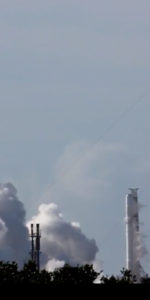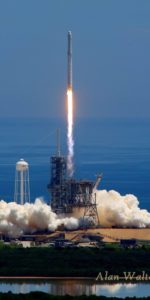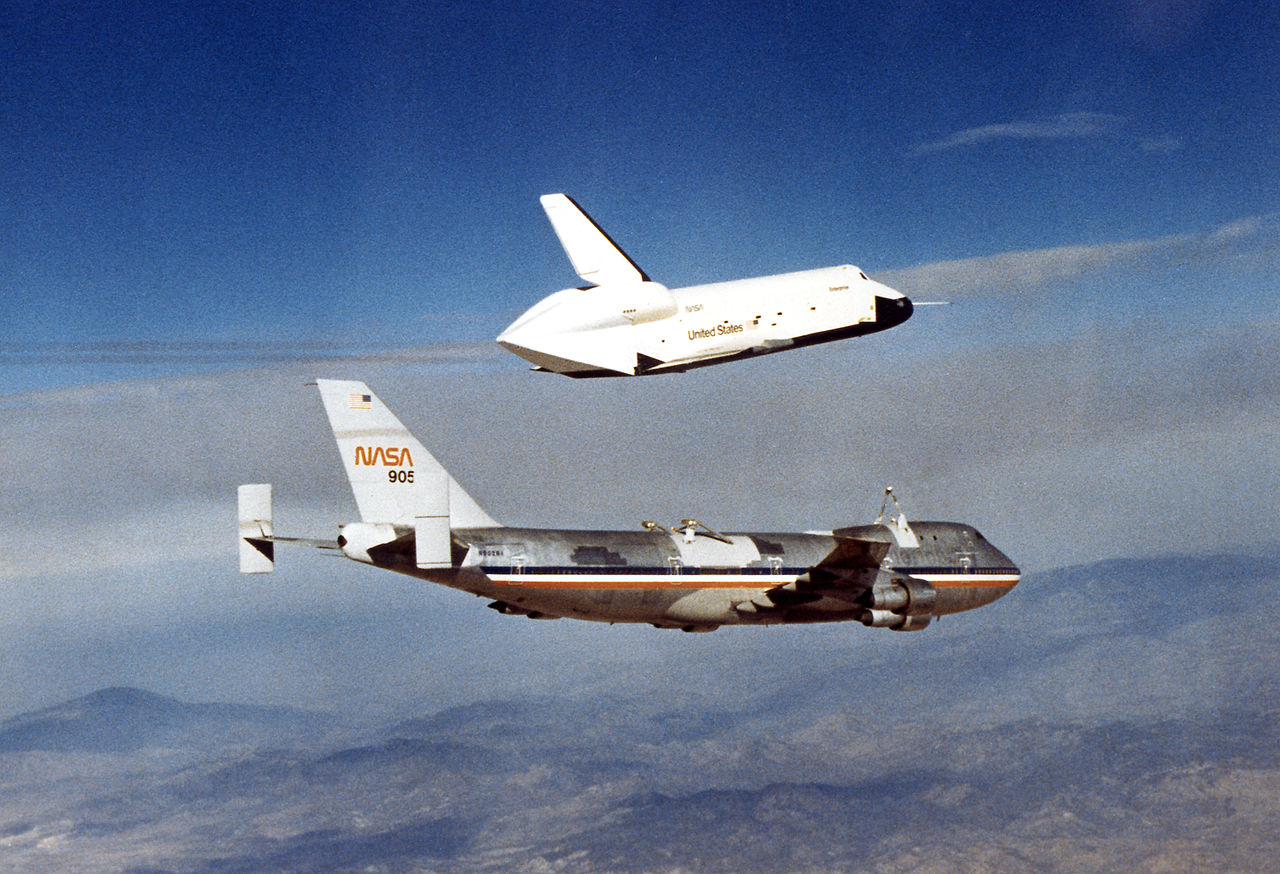
They gathered in their thousands—65,000, in fact—at Edwards Air Force Base, Calif., in the cool, pre-dawn hours of Friday, 12 August 1977, to witness America’s first Space Shuttle take flight and perform its first independent landing. Among those thousands were 900 accredited members of the media and 2,000 special guests. By this time, “Enterprise” had already conducted a number of tests, attached to the top of NASA’s Boeing 747 Shuttle Carrier Aircraft (SCA), but 40 years ago this week she demonstrated that the Space Shuttle could achieve flight under its own control.
As outlined previously by AmericaSpace, Enterprise staged three “taxi” runs atop the SCA in February 1977, followed by five uncrewed captive-inert flights and, in June, a trio of captive-active flights, the latter of which included astronauts aboard the vehicle for the first time. Apollo 13 veteran Fred Haise, former X-15 aviator Joe Engle and “rookie” astronauts Dick Truly and Gordon Fullerton rode Enterprise to altitude, but the shuttle itself remained firmly affixed to the SCA. Beginning on 12 August 1977, the astronauts would separate Enterprise from the Boeing and guide her to a landing in the high desert.
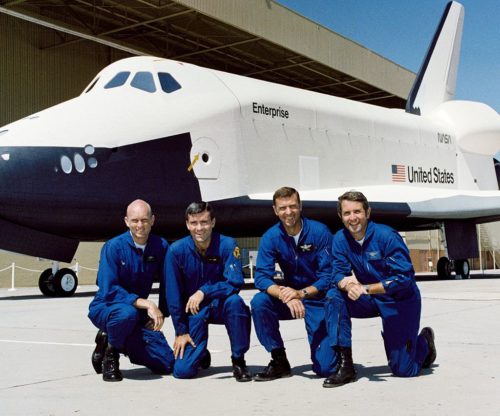
It had been only a matter of months since Enterprise’s completion and rollout in September 1976 and the Space Shuttle Program (SSP) itself was still several years away from staging its first piloted mission into low-Earth orbit. And among the special guests at Edwards for her first free flight was then-NASA Administrator James Fletcher, together with a handful of congressmen and senators and scientist-astronaut Joe Allen, serving in his capacity as the space agency’s head of legislative affairs.
Aboard Enterprise, Haise occupied the Commander’s seat, with Fullerton to his right side as Pilot. At precisely 8:00 a.m. PDT, the SCA pilot Fitz Fulton ran the 747’s engines up to full power and the massive combo swept smoothly along Edwards’ concrete Runway 22 and took flight. It was accompanied by five T-38 Talon jets. Higher-than-normal air temperatures at altitude delayed the planned 8:30 a.m. separation of Enterprise, but at 8:48 a.m.—traveling at 310 mph (500 km/h)—Fulton nosed the aircraft into a seven-degree dive.
“The Enterprise is set!” yelled Haise. “Thanks for the lift.”
Haise then pushed the separation button on Enterprise’s instrument panel and seven explosive bolts fired, “popping” the shuttle away from the SCA. In response, Fulton put his aircraft into a descending left turn, whilst Haise placed Enterprise into a right-hand turn and pitched “upwards” to increase the relative separation distance.
Fullerton, meanwhile, was busily scrabbling to remove circuit breakers and reset switches within seconds of leaving the top of the Boeing. “The instant we pushed the button to blow the bolts and hop off the 747,” he said years later, “the shock of that actually dislodged a little solder ball and a transistor on one of the computers and we had the caution tone go off and the red light. We had three [cathode-ray tube monitors] and one of those essentially went to halt. This is pretty fundamental. All your control of the airplane is through fly-by-wire and these computers. I had a cue card with a procedure if that happened, that we’d practised in the simulator, and I had to turn around and pull some circuit breakers and throw a couple of switches to reduce your susceptibility to the next failure. I did that and, by the time I looked around, I realized, hey, this is flying pretty good, because I was really distracted from the fundamental evaluation of the airplane at first.”
As Fullerton worked, Haise held two degrees of pitch for three seconds, before banking 20 degrees to the right and heading for dry lakebed Runway 17. Maintaining a nine-degree, nose-down attitude, Enterprise executed a pair of 90-degree turns and Haise aimed her for the runway centerline and opened the speedbrake. Mission Control in Houston erroneously radioed that he had a lower lift-to-drag ratio than predicted in wind-tunnel tests, to which Haise responded by flying his final approach at higher speed, conserving energy to extend the glide. In fact, Enterprise’s lift-to-drag ratio was exactly as expected.
Realizing that the shuttle was actually “high and hot”, and that he would land “long”, Haise opened the speedbrake from 30 to 50 percent to slow down and began the landing flare at an altitude of 900 feet (275 meters). As Enterprise leveled out, he deployed her landing gear and touched down 2,950 feet (900 meters) “long” at 211 mph (340 km/h). In view of her low lift-to-drag ratio, the shuttle had remained independently airborne for almost five and a half minutes. One unusual aspect of the touchdown was provided by the shortness of the nose landing gear, which caused the wings to tip downwards in a “negative” angle of attack as soon as all six wheels were on the ground.
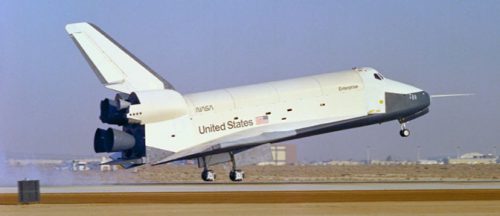
“It felt almost funny,” Haise recalled, “the first time you de-rotate, or try to the put the nose down: for a little bit, you almost think you don’t have a nose gear, because it goes down so far! It does present a problem today, where the vehicle’s heavier, with [the need to follow] a ritual on de-rotating to get the nose gear on. I’ve never been on an airplane that you had to actually worry about a sequence to do that effectively, because if you do de-rotate too fast, too early, while you’re still at high speed, the effect of that negative lift, putting pressure down on the tires, can conceivably blow [them].
“You have to go down to a point in pitch to hold and wait till you get below a certain speed to then continue the de-rotation to effectively get the nose gear on the ground,” Haise continued. “At the same time, you can’t hold it off too long, while it’s still too high, or you’ll lose the ability to arrest the fall [through], and so, if you kept it up too long, it would fall through and damage the nose gear from the standpoint of hitting down too hard. You’ve kind of got to work in between [with] a scheme of getting the nose gear on the runway.”
For NASA Administrator James Fletcher, the first independent landing of Enterprise turned into something which left him more than a little red-faced. As the vehicle dropped closer and closer to the runway, he began to panic that the shuttle was going to crash and shouted “Landing gear! Landing gear!” at the top of his voice. The congressmen and senators around him remained silent. Seconds later, the landing gear duly popped out. “The flying procedure,” explained Joe Allen, “is you can’t put [the gear down] until the airplane’s going a certain speed, lest you rip [it] off. That speed is very close to the ground, so it’s unnerving to watch. No question.”
Later that day, Fletcher told Allen of his embarrassment at having shouted and having not known that the gear would be deployed at virtually the last second…
This is part of a series of history articles, which will appear every Sunday, barring any major news stories. Next week’s article will focus on the 40th anniversary of the launches of the Voyager space probes into the outer Solar System and beyond.
Be sure to “LIKE” AmericaSpace on Facebook and follow us on Instagram & Twitter!




